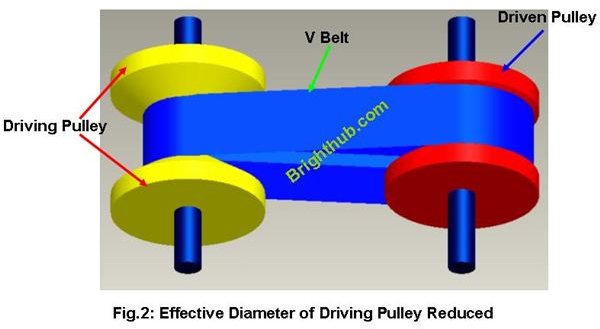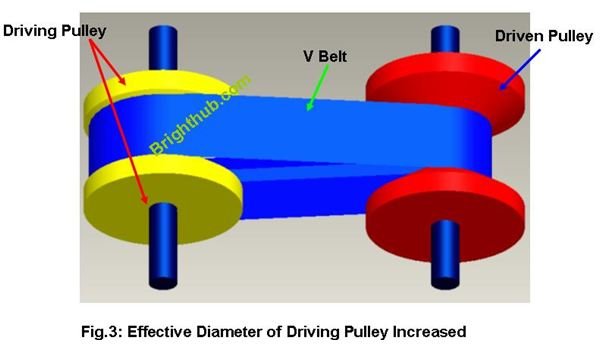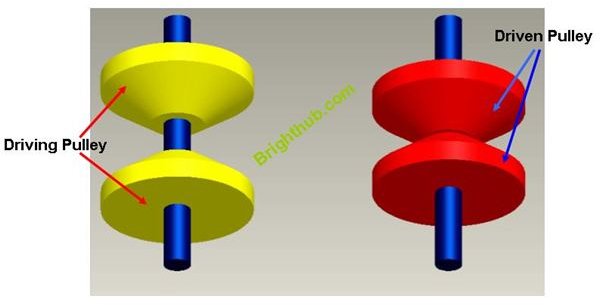Continously Variable Transmission - How does a CVT Work?
What is a CVT Gearbox?
The continuously variable transmission or CVT is an automatic transmission system (like a gearbox) where the gear ratio can be smoothly varied in a continuous range. Unlike the manual variable gearbox, where you can achieve only four or five types of gear ratio, with the CVT gearbox you can achieve infinite numbers of gear ratios between a minimum and maximum value.
Three different types of CVT gearbox are used widely across the industry: pulley-based CVT, toroidal CVT, and hydraulic CVT. This article will discuss the most-easily understood pulley-based CVT.
How Does a Pulley Based CVT Works?
The CVT gearbox, like other types of gearboxes, transmits torque and rotational speed from the driving end to driven end. In the pulley-based CVT, the torque transmission is done via a “V-Belt” from a “driving pulley” to a “driven pulley”.
Each of the “driving” and “driven” pulleys is made up of two halves, and the halves can be pushed in or out. If the halves of the pulleys are pushed out, then the “V belt” running over it will go down and the effective diameter will reduce.

You already know that if the effective diameter of the “driving pulley” gets reduced, then the speed of the “driven pulley” will also reduce proportionately, and vice versa. Also, remember that as the speed of the driven pulley goes down the torque carrying capacity goes up, or in lower RPM the “driven pulley” will be able to handle a higher torque requirement.
Now see the picture below where the two halves of the “driving pulley” coming closer and the halves of the driven pulley are drawing away.

From the picture you can see that the “V belt” is running around the periphery area of the “driving pulley” and is running around the centre area of the “driven pulley,” and that is how the effective diameter of the “driving pulley” got increased and that of the “driven pulley” got decreased. And from the gear and pulley drive basics, you can say that in this situation the speed of the “driven pulley” will increase and the torque carrying capacity will decrease.
The above two picture explains the two extreme conditions of a typical CVT. The action of coming closer or going further apart of the halves of the pulley can be carried out by a mechanical, hydraulic, or electrical system. The processes of separation or coming closer of the pulley are carried away in a coordinated manner so that the “V belt” can be accommodated in the grove easily. For example, both the pulleys cannot be separated out at a same time or else the “v belt” length won’t be sufficient to run through the pulleys.
Conclusion
The pulley based CVT or continuously variable transmission is used for the automatic transmission. The typical conceptual ProE models are used to explain what is CVT gearbox and how does a CVT works. The actual system is much more complicated.
